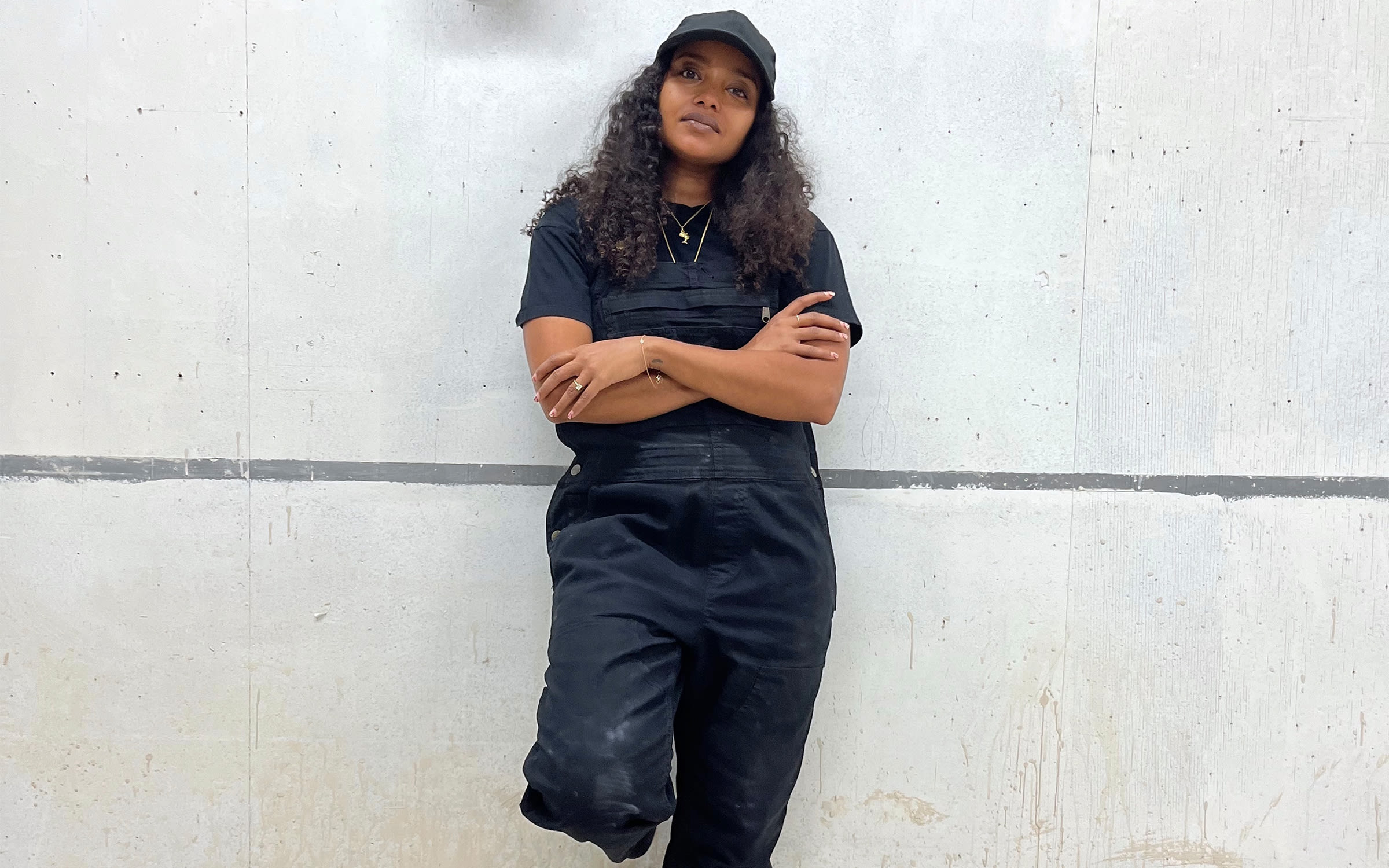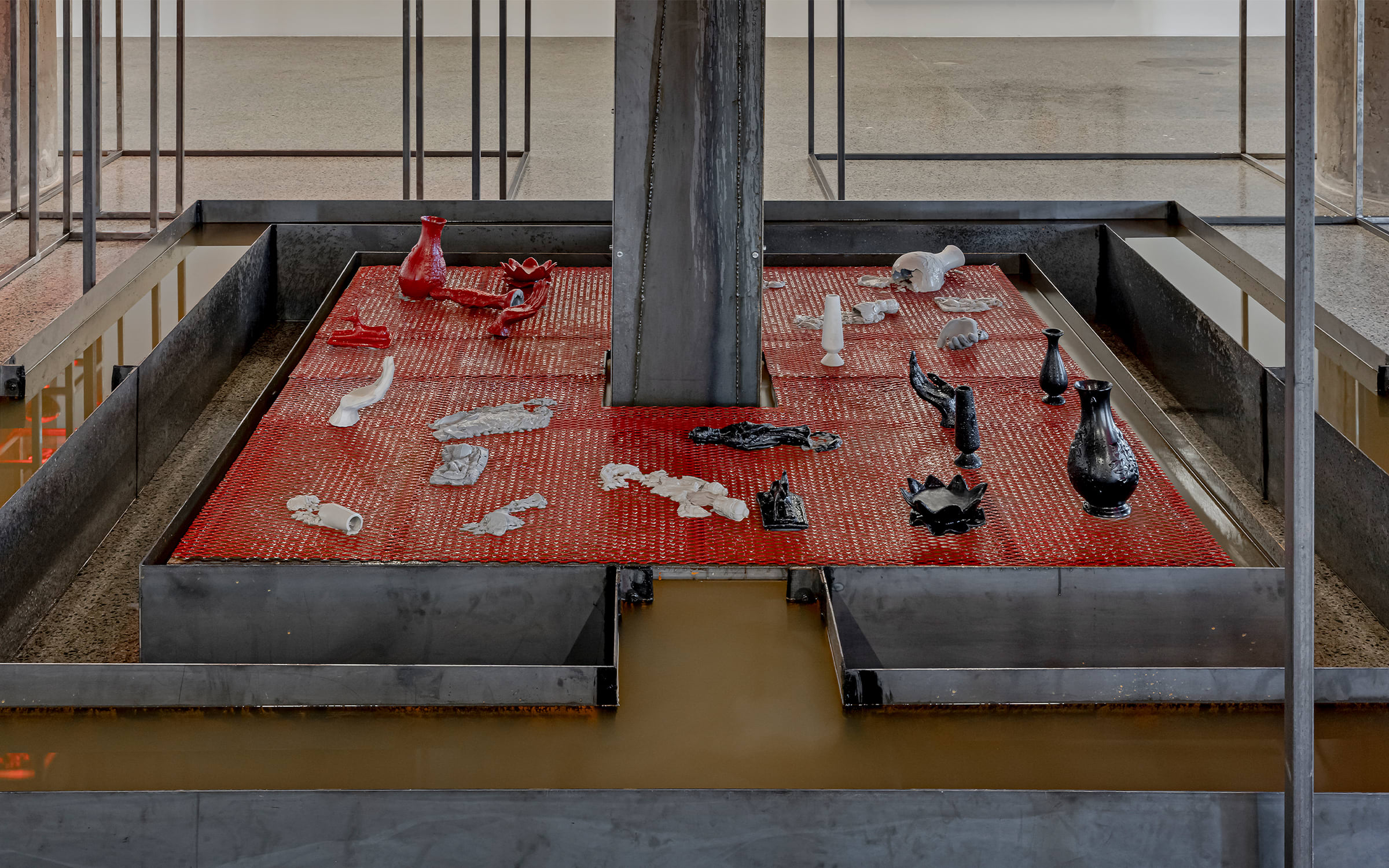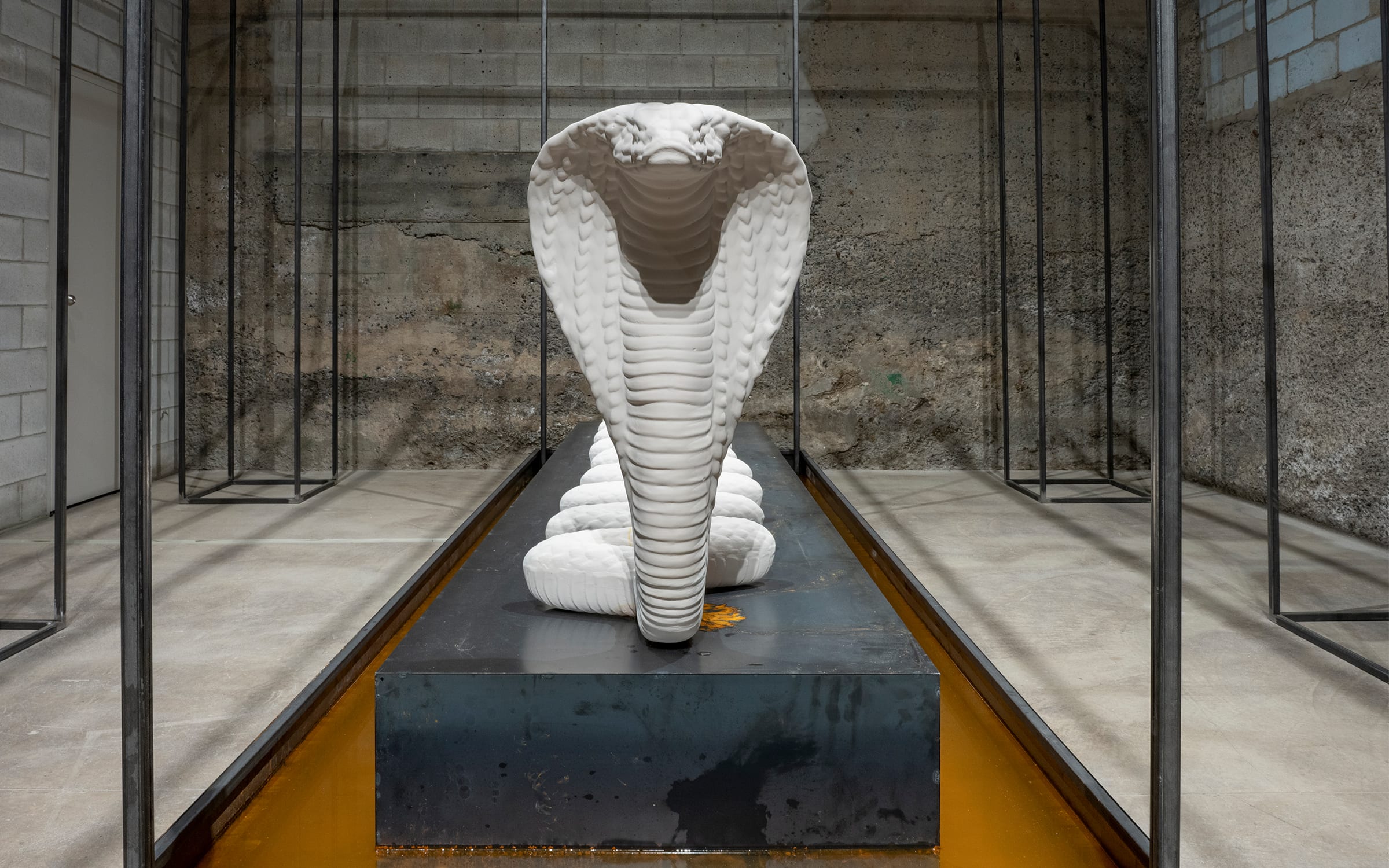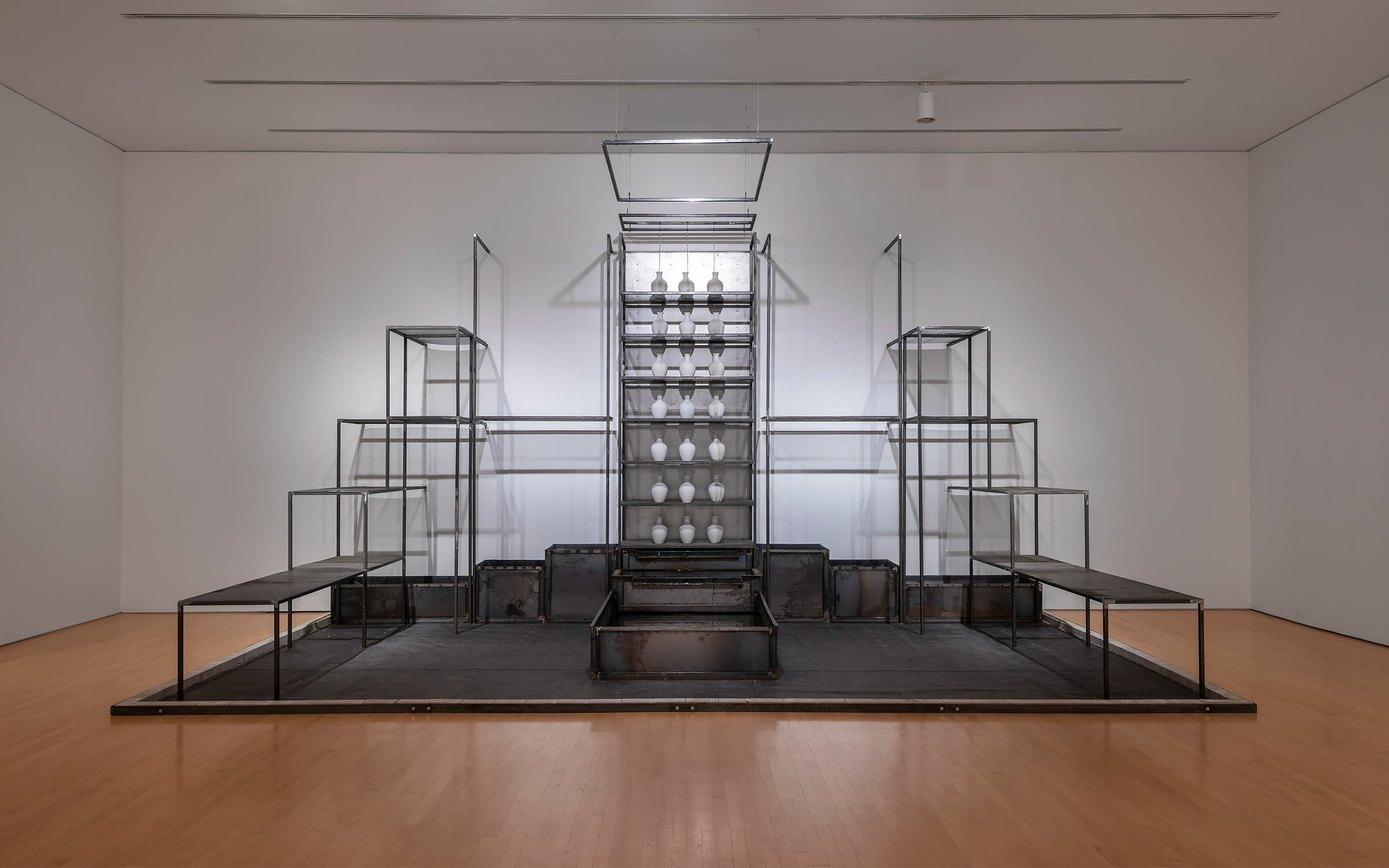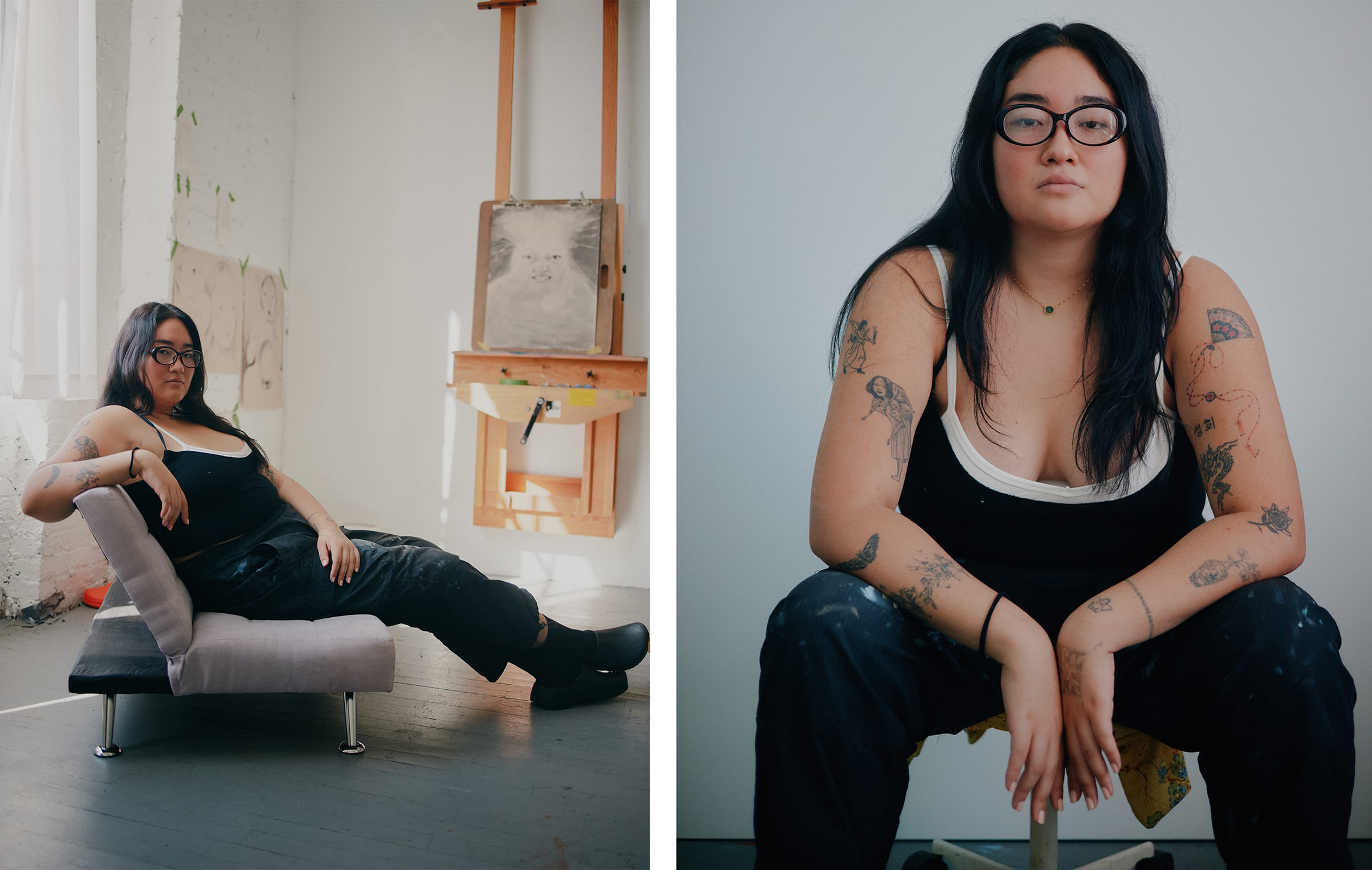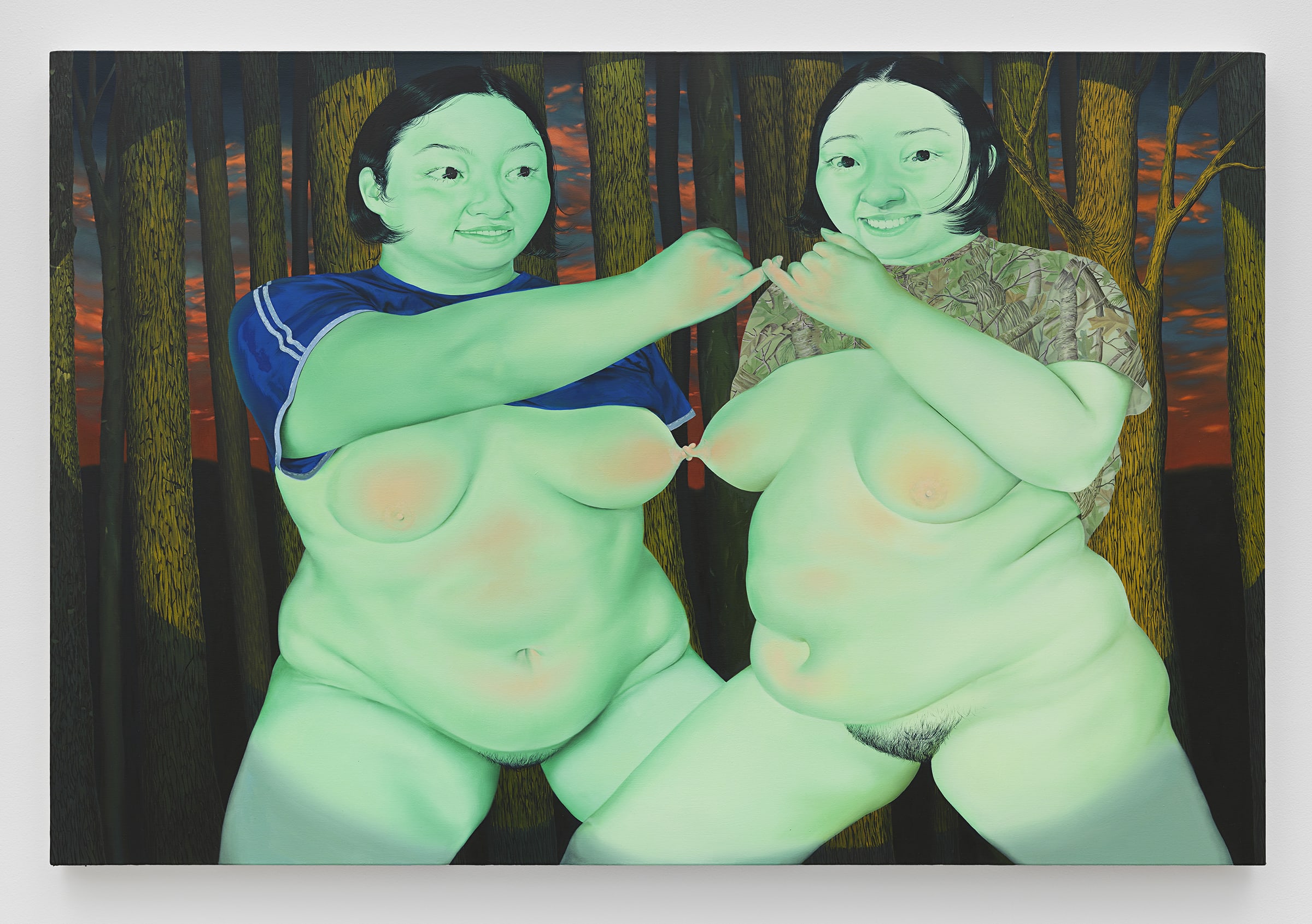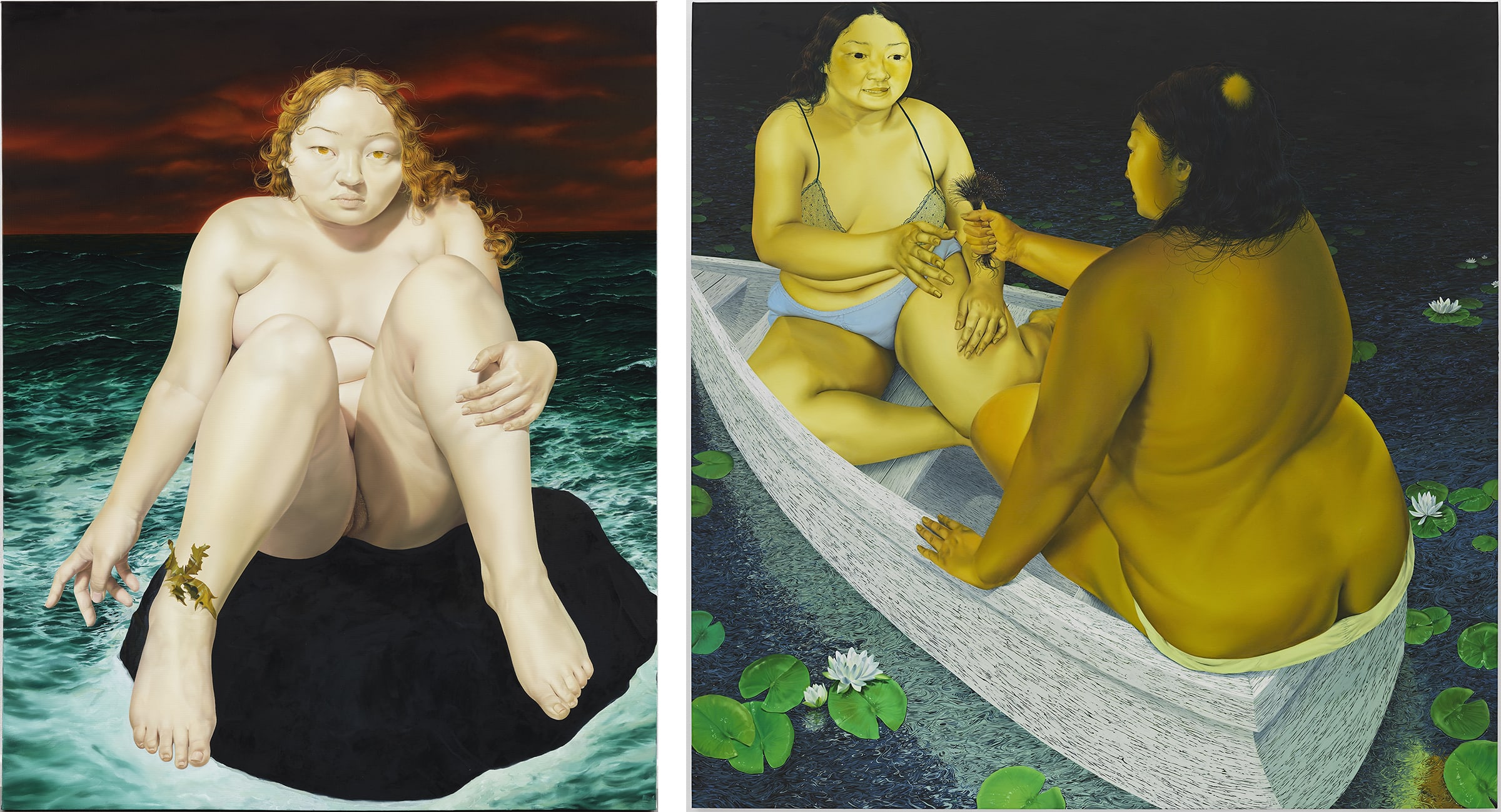Art Basel announces additional show highlights for the 2023 edition of its Americas fair in Miami Beach, as well as a vibrant cultural program within the halls and across Miami Beach.
- The leading fair in the Americas will welcome 277 premier international galleries this December, with 25 newcomers joining an outstanding line-up of veteran exhibitors, two-thirds of which hail from North and Latin America
- Dedicated to monumental artworks, the Meridians sector will host 19 thoughtprovoking projects including new and site-specific works, with a focus on new perspectives on how we collectively inhabit our planet
- The Kabinett sector will feature 30 galleries showcasing 28 carefully curated installations within their main booths
- Free to the public, Art Basel’s Conversations program will return with a series of live debates among thought leaders on the key topics shaping the world of art and culture, with a focus on celebrating Latin America
- Beyond the fair halls, Art Basel will collaborate with world-class institutions, private collections, and cultural partners for an expanded program of exhibitions and events across Miami Beach throughout the fair week
- Art Basel, whose Global Lead Partner is UBS, will take place at the Miami Beach Convention Center (MBCC) from December 8 to 10, 2023, with Preview Days on December 6 and 7
‘We welcome the artworld back to Art Basel Miami Beach this year with curated sectors and programming as inspired and ambitious as ever,’ said Vincenzo de Bellis, Director, Fairs and Exhibition Platforms, Art Basel. ‘Meridians will host 19 exceptional projects that go beyond the traditional art fair format to explore how we engage with our shifting natural and cultural environments. Our Kabinett sector will return with several first-time exhibitors, and our Conversations program will celebrate Miami Beach as the geographic and creative nexus of North and Latin America. Outside the halls, a truly exceptional cultural program will unfold at Miami Beach’s institutions and private collections, from Hernan Bas, Anne Duk Hee Jordan, and Etel Adnan at The Bass, to Charles Gaines and Tau Lewis at ICA Miami, to Gary Simmons at PAMM.’ De Bellis is spearheading this year’s edition of the fair. Bridget Finn, newly appointed Director, Art Basel Miami Beach, will lead the show starting in 2024.
Meridians
Featuring 19 projects this year, including new and site-specific works for Art Basel Miami Beach, Meridians invites exhibitors to showcase monumental historical and contemporary works which transcend the traditional art fair booth. Curated for the fourth consecutive year by Magalí Arriola, Mexico City-based curator and Director of Museo Tamayo Arte Contemporaneo, this edition of the sector brings together works ‘that speak to nature, to the land, and to various cultural and spiritual geographies in a world of changing boundaries and shifting identities,’ said Arriola.
Highlights include:
- A new installation by American artist Ja’Tovia Gary, featuring a 26-minute film composed of vintage Hollywood imagery, direct animation, original super8 footage, and documentary elements, as well as a recreated domestic environment, responding to Toni Morrison’s seminal 1970 novel The Bluest Eye, presented by Paula Cooper Gallery (New York)
- Four sculptures in the form of trophies by Guyanese-British artist Hew Locke reflecting on the exercise and representation of power, in a suite titled Gilt (2022) created for The Met’s historic façade niches and referencing works of art in the museum’s collection, presented by Almine Rech (Paris, Brussels, Shanghai, London, New York)
- Private Collection (2023), a new sculptural installation by Bay Area-artist Saif Azzuz in the form of a painted fence yard, probing questions of access, the privatization of land, settler colonialism, and Indigenous resilience, presented by Nicelle Beauchene Gallery (New York)
- 1968: El fuego de las Ideas (‘1968: The Fire of Ideas’) (2014-2018) by Argentinean artist and human rights activist Marcelo Brodsky, a sprawling display of archival images depicting global public and political manifestations which took place in 1968, presented by Rolf Art (Buenos Aires)
- The Cellist (2023), Miami-based artist Reginald O’Neal’s first sculptural installation, a new ten-foot-tall reproduction of a small jazz cellist figurine in an environment which replicates scenes from the artist’s ‘Entertainer’ painting series, presented by Spinello Projects (Miami)
- Compatriots (2023), an installation comprised of several large-scale figurative paintings by Julie Buffalohead, Minnesota-based artist and member of the Ponca Tribe of Oklahoma, drawing from a symbolic lexicon inspired by the artist’s heritage, presented by Jessica Silverman (San Francisco)
- 89,911 – An. / 86,054 – Ob. (2021) from Mexican artist Gabriel de la Mora’s ‘Ígnea’ series, featuring monochromatic works comprised of hand-carved andesite and obsidian fragments on wood, manipulating materials appreciated by the Mesoamerican peoples for their symbolism and usefulness, presented by Proyectos Monclova (Mexico City)
For the full list of artists and galleries presenting in Meridians, visit artbasel.com/miamibeach/meridians.
Kabinett
A mainstay section of the Miami Beach show, featuring art-historical and solo showcases, Kabinett will return with 28 concisely curated installations presented within exhibitors’ main booths.
Highlights include:
- The first-ever solo presentation in the U.S. of British painter and former punk band manager Caroline Coon, featuring a selection from the artist’s ongoing ‘beach series’ and coinciding with her inclusion in Tate Britain’s group show ‘Women in Revolt!’, presented by Stephen Friedman Gallery (London, New York)
- Cafe Cleopatra (2023), a site-specific installation of new sculptures and drawings by
New York-based artist Elisabeth Kley, known for her black and white ceramic sculptures, vessels, drawings, and paintings inspired by modernist theater sets and costume designs, presented by Canada (New York, East Hampton)
- New paintings by Cherokee artist Kay WalkingStick, presented by Hales (New York), in which the artist overlays vistas of rural American landscapes with the designs of the Native American people who have inhabited the area
- A new series of lenticular prints by American artist Kandis Williams, which, through theatrical and cinematic portrayals of Black female characters, test the limits of racial and gendered tropes, presented by Morán Morán (Los Angeles, Mexico City)
- New works in ceramics and watercolors by Brazilian artist Sallisa Rosa, prepared especially for the fair and forming part of the Brazilian artist’s ongoing investigations into memory through materiality, presented by A Gentil Carioca (Rio de Janeiro, São Paulo)
For the full list of artists and galleries presenting in Kabinett, visit artbasel.com/miamibeach/kabinett. Furthermore, the fair will host exhibitors across its four additional sectors, announced earlier this year. Highlights from Galleries, where the world’s leading galleries present the full breadth of their program, include historic and never-before-seen works by ArgentinianItalian surrealist Leonor Fini from the artist’s personal collection, jointly presented by Galerie Minsky (Paris) and Weinstein Gallery (San Francisco), as well as an homage to Brockman Gallery, the first major contemporary gallery run by and for Black artists, coorganized by Parrasch Heijnen Gallery (Los Angeles) and Franklin Parrasch Gallery (San Francisco) in collaboration with Alonzo Davis, one of Brockman Gallery’s founders. In Nova, the sector for galleries presenting new works by up to three artists, The Ranch (New York) will showcase never-before-exhibited sculptures by Puerto Rican artist Daniel Lind-Ramos inspired by his hometown of Loíza, the largest Afro-Caribbean enclave in Puerto Rico, while Gypsum Gallery (Cairo) will present new paintings by Egyptian artist Basim Magdy, the first staging of the artist’s paintings in a U.S. context.
In Positions, the sector for young galleries showcasing ambitious solo presentations by emerging voices, Galatea (Rio de Janeiro) will exhibit a new photo series by Brazilian artist Allan Weber, known for his work on everyday life in Rio de Janeiro’s favelas. Also in the sector, Dürst Britt & Mayhew (The Hague), the first Dutch gallery to participate in Art Basel Miami Beach, will present new work, hand-carved on native wood, by Mexican artist Alejandra Venegas. Highlights from Survey, dedicated to galleries showcasing artistic practices of historical relevance, include solo presentations of American artist and activist Karen Finley centered on her seminal 1977 interactive installation at the Museum of Contemporary Art, Los Angeles, during a protracted legal battle with the National Endowment for the Arts, presented by Freight+Volume (New York), as well as American artist Vivian Browne, whose ‘Africa Series’ paintings from the 1970s will be presented at the fair by Ryan Lee (New York).
To view exhibitors from these sectors, visit artbasel.com/miami-beach/the show.
Conversations Running from December 7 to 9 and free to the public, Conversations is a series of live
debates bringing together some of today’s most inspiring cultural figures. Curated by Emily Butler, the renowned series this year features 35 thought leaders across nine panels celebrating Latin America and providing insights into the evolving global art scene. The program draws inspiration from the city of Miami’s position as a gateway to Latin America and the Caribbean to honor Afro-Latino, Latino, and feminist histories, the artistic ecologies of Florida, and other topical issues in 2023.
Highlights include:
- For ‘Premiere Artist Talk,’ a tribute to the practice of leading artist María Magdalena Campos-Pons, from her youth in Cuba to her acclaimed retrospective on tour in the U.S., presently on view at The Brooklyn Museum. Campos-Pons will be in discussion with Franklin Sirmans, Director of Pérez Art Museum Miami, and Crystal Williams, President of Rhode Island School of Design
- Singer-songwriter, producer, and activist Chance the Rapper
- Collector, curator, and philanthropist Estrellita Brodsky with artist Guadalupe Maravilla and Art Basel Executive Editor Coline Milliard
- Directors of new and recently re-opened US institutions – Jillian Jones of The Albright-Knoxx Museum, Tonya M. Matthews of the International African American Museum, and Silvia Karman Cubiñá of The Bass Museum – exploring the question of how museums remain relevant with cultural strategy advisor András Szántó
- Other panels include: ‘Collecting in Brazil,’ with a look at the current state of the art market in Latin America; ‘Artist-Led Residencies in Florida’; ‘From Supercontinents to Florida: Artists on Climate Change’; ‘Biohacking Creativity’; and ‘Found in Translation’
Additional participants in Conversations include: Pedro Barbosa, Oliver Basciano, Márcio Botner, James Bridle, Emily Butler, Tania Candiani, Anne Duk Hee Jordan, Jeni Fulton, Noémie Goudal, Stefanie Hessler, Eduardo Kac, Cathy Leff, Lorie Mertes, Hans Ulrich Obrist, Esther Park-Clemetson, Lee Pivnik, Luisa Strina, Juana Valdés, and Sadie Woods.
All panels will be livestreamed on Art Basel’s Facebook page. Recordings will be available on Art Basel’s website following the event. See the full program at artbasel.com/miamibeach/conversations.
Museum Shows, Private Collections, and additional programming Visitors to the fair will have the opportunity to experience a range of outstanding events, exhibitions, and special projects beyond the halls throughout the fair week, hosted by Art Basel’s world-class cultural partners. Major shows coinciding with Art Basel include:
- The Bass
‘Hernan Bas – The Conceptualists’
‘Anne Duk Hee Jordan – I will always weather with you’
‘Etel Adnan – Painting into Space’
‘Nam June Paik – The Miami Years’
‘Carola Bravo – Between Absence and Presence’
- de la Cruz
‘House in Motion / New Perspective’
- The Institute of Contemporary Art, Miami (ICA Miami)
‘Ahmed Morsi in New York: Elegy of the Sea’
‘Sasha Gordon’
‘Anne Collier’
‘Charles Gaines: 1992-2023’
‘Tau Lewis’
- Locust Projects
‘Cornelius Tulloch: Poetics of Place’
‘Tania Candiani: Waterbirds: Migratory Sound Flow’
- Marquez Art Projects (MAP)
‘Cristina de Miguel: Your Body Is Pieces’
- Margulies Collection at the Warehouse
‘Mimmo Paladino: Painting and Sculpture’
‘Motherwell, Segal, Stella’
‘Helen Levitt – New York Street Photographer 1930s-1990s’
‘Only Sculpture: Bladen, Fabro, Heizer, Noguchi, Perlman, Merz, Serra, Tony Smith,
Snelson, Tucker, Franz West, Wilmarth’ ‘New to the Collection: Jenny Brosinski, David Deutsch, Jürgen Drescher, Hadi Falapishi, Anna Fasshauer, Duane Linklater, Alessandro Piangiamore, Magnus Plessen, Sara Ramo, Rose B. Simpson, Giuseppe Spangulo, Lisa Williamson,
Marina Zurkow, and James Schmitz’ ‘Danny Lyon: 100 Photographs’
- Pérez Art Museum Miami (PAMM)
‘Gary Simmons: Public Enemy’
‘Joan Didion: What She Means’
‘Yayoi Kusama: Love is Calling’
‘Madeleine Hunt-Ehrlich: Too Bright to See’
‘Marcela Cantuária: The South American Dream’
‘Jason Seife: Coming to Fruition’
- NSU Art Museum Fort Lauderdale
‘Walasse Ting: Parrot Jungle’
‘Glory of the World: Color Field Painting (1950s to 1983)’
‘Pablo Picasso: Dust You Are, To Dust You Return’
‘House of Glackens’
‘Cosmic Mirrors: Haitian Art Highlights from the Collection’
‘The Eye of CoBrA’
- Rubell Museum ‘Collection Highlights’
UBS Art Studio: The Poetics of Dimensions
In partnership with Art Basel and ARTNOIR, UBS will present the video piece …encounter?flee (untitled) (2023) by Julianknxx on the façade of Soundscape Park WALLCAST. …encounter?flee (untitled) blurs the lines between poetry and film as its figures appear, disappear, and reappear in a constant loop. Located alongside the New World Symphony at 500 17th Street in Miami Beach, the work will be on view every evening from December 5 to 11, 2023, from 5:30PM to 11PM, and is free to the public.
The video projection is part of The Poetics of Dimensions, a group exhibition presented by UBS in collaboration with ARTNOIR. The presentation is curated by ARTNOIR co-founder Larry Ossei-Mensah and features, in addition to Julianknxx’s outdoor piece, works by Anthony Akinbola, Sonia Gomes, Melissa Joseph, and Nari Ward, who each engage in practices that utilize dynamic and accessible materials like durags, felt, shoelaces, and other textiles to instigate dialogues about history, memory, myth, ritual, and identity. Located near the Meridians sector at the MBCC, the exhibition will be open from December 6 to 10, 2023 to Art Basel Miami Beach ticket holders.
The Legacy Purchase Program
For its fourth edition, the City of Miami Beach will acquire through its Legacy Purchase Program a work from the Nova or Positions sectors to enter the City’s public art collection via a public vote. The new acquisitions will be on view at a dedicated, publicly accessible area of the MBCC.
The CPGA-Étant Donnés Prize
The Comité Professionnel des Galeries d’Art (French Professional Committee of Art Galleries, or CPGA) and Villa Albertine will join forces for the second edition of the CPGAEtant Donnés Prize, which rewards a French or France-based living artist participating at Art Basel Miami Beach 2023 and their exhibiting gallery. The winner of the prize will be selected by an appointed jury of international curators and collectors and will receive a $15,000 cash prize, split equally between the artist and the gallery. In 2022, the prize was awarded to French artist Julien Creuzet and his galleries High Art (France) and Andrew Kreps (USA).
NOTES TO EDITORS
About Art Basel
Founded in 1970 by gallerists from Basel, Art Basel today stages the world’s premier art shows for Modern and contemporary art, sited in Basel, Miami Beach, Hong Kong, and Paris. Defined by its host city and region, each show is unique, which is reflected in its participating galleries, artworks presented, and the content of parallel programming produced in collaboration with local institutions for each edition. Art Basel’s engagement has expanded beyond art fairs through new digital platforms and initiatives such as the Art Basel and UBS Global Art Market Report. Art Basel’s Global Media Partner is The Financial Times. For further information, please visit artbasel.com.
About Magalí Arriola
Magalí Arriola, Director of Museo Tamayo, lives and works in Mexico City. Arriola joined Art Basel with recent institutional experience at KADIST, where she was Lead Curator for Latin America, and Museo Jumex, where she was Curator between 2011 and 2014. She was the curator of Mexico’s participation in the 58th Venice Biennale in 2019, showing artist Pablo Vargas Lugo with a project entitled ‘Acts of God.’ Her other recent, independent curatorial projects include ‘What do you dream of? The Mohole Flower and other Tales,’ Galeria Luisa Strina, São Paulo, August-October 2018; ‘A Place out of History,’ a film screened at documenta14 and FIDMarseille (2018), produced by Destello Films; and Sunset Décor,
Marian Goodman Gallery, New York City, June to August, 2017.
About Emily Butler
Emily Butler is Conversations Curator, Art Basel, freelance curator and PHD candidate in Curatorial Practice, ZHdK / University of Reading. Previously she was Curator at Whitechapel Gallery, London. Her projects have included the Artists’ Film International programme (2016-21); survey exhibitions such as The London Open 2018 and 2022; Electronic Superhighway (2016); major solos by Kai Althoff (2020), Hannah Höch (2014), John Stezaker, and Wilhelm Sasnal (2011); collection displays; commissions by Nalini Malani (2020), Carlos Bunga (2020), Katja Novitskova (2018), Benedict Drew (2016), Kader Attia (2013), and Rachel Whiteread (2012); as well as festivals including Nocturnal Creatures 2021, 2018 and Art Night 2019, 2017. She has held roles in the Visual Arts Department, British Council and at the Centre Georges Pompidou, Paris. She contributes to international publications and independent projects.
Partners
UBS & Contemporary
Global Lead Partner of Art Basel, UBS has a long history of supporting contemporary art and artists. The firm has one of the world’s most important corporate art collections. UBS seeks to advance the international conversation about the art market through its global lead partnership with Art Basel, and as co-publisher of the ‘Art Basel and UBS Global Art Market Report’ and the ‘Art Basel and UBS Survey of Global Collecting’. UBS also supports some of the world’s most important arts institutions, events and fairs. UBS provides its clients with insight into the art market, collecting, and legacy planning through its UBS Collectors Circle and UBS Art Advisory. For more information about UBS’s commitment to contemporary art, visit ubs.com/art.
Art Basel’s Associate Partners are Audemars Piguet, whose contemporary art commissioning program, ‘Audemars Piguet Contemporary,’ works with artists to support and develop an unrealized artwork which explores a new direction in their practice. Coinciding with Art Basel Miami Beach, Audemars Piguet Contemporary will premiere its new commission, a large-scale ceramic installation titled ‘Topography of Memory’ by artist Sallisa
Rosa. NetJets – the world leader in private aviation; and Louis Vuitton, which nurtures a longstanding commitment to the arts by collaborating with international artists. Art Basel is also supported globally by BMW, La Prairie, Ruinart, Sanlorenzo, On, GOAT, and Quintessentially.
Art Basel’s show in Miami Beach is also supported by Sotheby’s International Realty, Chubb, Solana, d’strict and Coinbase, as well as Casa Dragones, Saint Laurent, Château d’Esclans, Perrier, TOV, and Kannoa. Hotel Partners include Grand Beach Hotel Miami Beach; The Ritz-Carlton, South Beach; and W South Beach. Art Basel’s Global Media Partner is The
Financial Times. For further information about partnerships, please visit artbasel.com/about/partners.
Art Basel & UBS School Group Program
Art Basel greatly values the attendance of school groups. This year, UBS is partnering with Art Basel to offer complimentary tickets for Art Basel Miami Beach to registered Schools, an initiative that provides enriching educational experiences in the world of modern and contemporary art. For more information, please visit artbasel.com/miami-beach/at-the-show.
Important Dates for Media
Media Reception
Wednesday, December 6, 2023
Auditorium of the MBCC
9AM – 9:45AM
Please RSVP to [email protected] by Tuesday, November 28.
Preview (by invitation only)
Wednesday, December 6 and Thursday, December 7, 2023
Public opening
Friday, December 8 – Sunday, December 10, 2023
Press Accreditation
Online registration for press accreditation for our show in Miami Beach is now open. Please note that an online application for accreditation prior to the fair is mandatory to receive your press pass. Press passes will be available in digital format only and accessible in the official Art Basel mobile app. For further information, please visit artbasel.com/accreditation.
Upcoming Art Basel Shows
Miami Beach, December 8-10, 2023
Hong Kong, March 28-30, 2024
Basel, June 13-16, 2024
Paris+ par Art Basel, October 18-20, 2024
Media Information Online
Media information and images can be downloaded directly from artbasel.com/press.
Journalists can subscribe to our media mailings to receive information on Art Basel.
For the latest updates on Art Basel, visit artbasel.com, find us on Facebook, or follow
@artbasel on Instagram, Twitter, LinkedIn, Weibo, and WeChat.
Press Contacts
Art Basel, May Mansour
Tel. +1 646 573 8722, [email protected]
PR Representatives for North and South America, the Middle East, and Africa
FITZ & CO, Yun Lee
Tel. +1 646 589 0920, [email protected]
PR Representatives for Europe
SUTTON, Joseph Lamb
Tel. +44 20 7183 3577, [email protected]
PR Representatives for France
CLAUDINE COLIN COMMUNICATION, Thomas Lozinski, Claire Jehl, and Aristide Pluvinage Tél. +33
(0)1 42 72 60 01, [email protected] & [email protected]
PR Representatives for Asia
SUTTON, Carol Lo
Tel. +852 2528 0792, [email protected]
